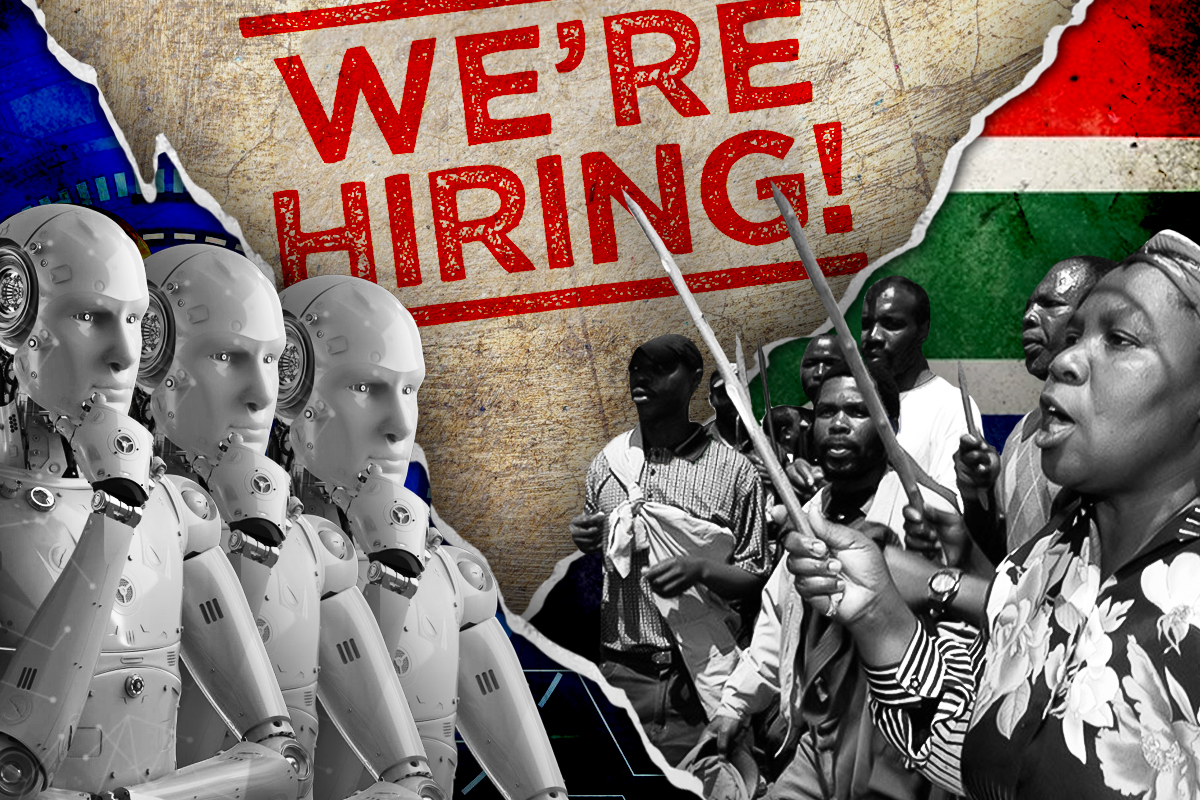Artificial Intelligence
South Africa’s big AI and jobs conundrum
A crisis looms in South Africa’s near future if unemployment and AI are not reconciled.

Industry analyst Arthur Goldstuck suggests that Artificial Intelligence (AI) should be regarded as a tool rather than seen as invasive or disruptive, aiming to alleviate fears of job redundancy.
South Africa currently faces an economic challenge: reconciling the impact of AI disruption with its unemployment rate and skills deficit.
Recent advancements in large language models like ChatGPT and Google Gemini have raised concerns among individuals about potential job threats.
This phenomenon is often referred to as the fear of being obsolete (FOBO) – a prevailing anxiety related to potential replacement by technological innovations.
The sentiment of FOBO is not a new concept and has historical precedent, notably seen during the Luddite movement in the early 19th century in response to automated textile machinery.
In the contemporary era, AI broadly encompasses computers showcasing intelligence, encompassing attributes such as logic, learning capacity, creativity, and critical thinking – essential components of human job functions.
According to South Africa’s National AI Government Summit discussion document, AI’s significance lies in its ability to replicate functions previously exclusive to human cognitive capabilities.
Introducing innovative technologies that could lead to redundancy may be deemed sustainable in countries with low unemployment rates, as indicated by a study by Hasraddin Galiyev analyzing high-tech developed nations.
However, South Africa, aiming to decrease its unemployment rate that currently stands at 32.9% of the population, faces a unique challenge in adopting AI.
Arthur Goldstuck, the founder of World Wide Worx and author of A Hitchhikers Guide to AI, suggests that rather than fearing AI, South Africa should embrace the economic advantages of this technology.
Goldstuck likens AI to mathematics or physics – tools that can improve working conditions by automating tasks that can be taken over by technology.
He argues that any job replaceable by automation should transition to AI, enhancing efficiency and productivity without dehumanizing the workforce.
For instance, Ikea’s implementation of an AI chatbot, Billie, in customer service call centers did not result in redundancies but led to upskilling employees into new roles.
Even in cases where automation displaces workers, increased efficiency often translates to higher production rates, creating opportunities for additional employment.
Goldstuck cites the example of the Ford assembly plant in Silverton, Pretoria, which integrated 493 robots to enhance production without reducing headcount, thereby boosting overall efficiency.
While AI can streamline processes, Goldstuck notes that it lacks the human touch necessary for tasks requiring empathy and decision-making, such as customer service.
Businesses considering AI implementation must weigh the tradeoffs, understanding that while AI offers efficiency gains, it may fall short in providing the personalized touch preferred by customers.
Ultimately, the integration of AI into the workforce will involve a learning curve and strategic decision-making by businesses seeking to balance automation benefits with human-centric interactions.















